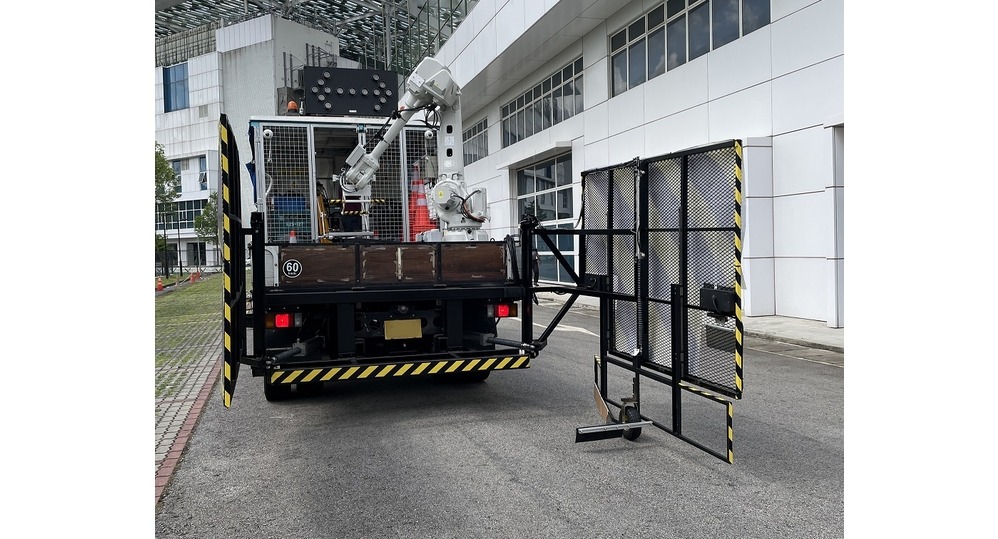Outdoor Mobile Robotic Platform
.jpg)

KEY INFORMATION
Waste Management & Recycling - Automation & Productivity Enhancement Systems
TECHNOLOGY OVERVIEW
Industrial robots are typically deployed indoors in factories for industrial automation applications such as manufacturing and production. Outdoor deployment in the absence of the traditional work cell boundaries, will typically necessitate safety precautions and perimeter fencing in order to maintain a safe working perimeter between the robot and any surrounding personnel. A Singapore-based research team has developed an integrated Outdoor Mobile Robotic Platform (OMRP) capable of executing the manual operations of human workers outdoors. The solution is based around the concept of a weather-resistant industrial robot arm mounted on a mobile vehicle platform. The system is integrated with vision systems and sensors to provide the appropriate safety zone monitoring and offers versatility catering to various use-cases via custom end effectors.
TECHNOLOGY FEATURES & SPECIFICATIONS
The system primarily comprises the use of a 6-axis industrial robot arm at the rear end of a truck. The effective reach of the robot is further enhanced through a customised linear track to extended to either ends of the vehicle. Depending on the application, an operator may be on deck to control, facilitate, and provide a watchful eye on the operations. A combination of vision cameras, laser sensors, and other sensor systems provide the necessary safety zone monitoring and perimeter fencing, while a linear track extends the robot’s reach and dexterity to cover a multitude of functions.
The OMRP system translates the strengths of the industrial robot arm from the factory floor to the outdoor environment, by utilising the robot arm to execute labour intensive manual operations at higher efficiency and precision.
POTENTIAL APPLICATIONS
The solution is well suited to serve as an Automated Lane Closure and Re-Opening System (ALCROS) via the deployment and eventual retrieval of traffic signages and cones. By customising the end effector and/or incorporating a tool changer, the same system may also be applied to a multitude of use cases, including and not limited to:
- Automated placement and retrieval of road closure equipment
- Paint removal and washing of roadside parapet and kerbs
- Road marking painting/removal
On top of improving safety, the required manpower required for the operation may be reduced to as high as 80% compared to current manual processes.
Unique Value Proposition
The value proposition offered by the ALCROS system is being the first known automation solution to simultaneously accomplish the following tasks:
- Deployment and retrieval of traffic cones while in the forward driving mode
- Deployment and retrieval of traffic signages while in the forward driving mode
While there are commercial solutions that are able to place and retrieve cones in a straight line, there has been no demonstration of the ability to deploy and retrieve them in a tapered pattern. It is noted that most of the commercial solutions execute cone collection in reverse, which if practised in Singapore would be a violation of expressway regulations. Additionally, solutions for warning signs placement and retrieval are not readily available yet. The novelty of ALCROS lies in its ability to accomplish all the above task requirements within a single vehicle setup, while complying with traffic regulations in the Singapore context, which no known commercial solution has so far satisfied. Through this new workflow, ALCROS is able to improve on productivity by reducing the number of personnel required, and more importantly, enhance their safety.
